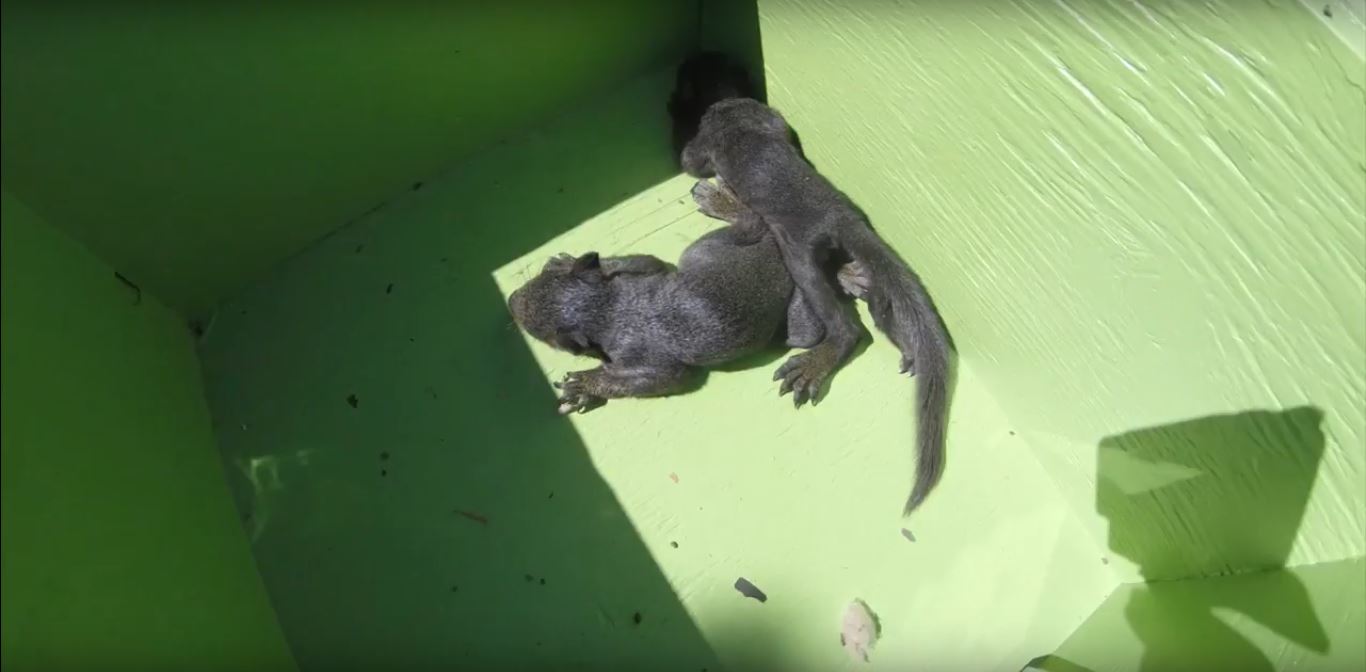
Pest Animal Removal Little Rock - Wildlife Control
Welcome to Pest Animal Little Rock! We are a wildlife removal company servicing Little Rock, AR. As wildlife control companies in this area go, we're the largest and also the number one rated, for three years in a row. It might be a little something to do with the technicians we have operating in your area, 24/7. It might be down to the friendly and helpful phone operators who also work around the clock. There's a chance that the incredible and constant number one rating is down to our fully-trained, incredibly experienced, and customer-care-focused operatives. Whatever it is, our customers love us. And most of them will only need to call us in just the one time to get this job done. In fact, a speedy, effective service is just one of the things that our company likes to pride itself on, but we don't cut corners to get the job done. A 32-point inspection will be followed with the best removal approach for the individual animal. Once removed, we will travel as far as is necessary to relocate the animal rather than put it down, and that can sometimes require driving some ten to fifteen miles or more. That's not all we'll do, though. There's the repair work, sealing job, and cleaning operation, all of which will be done to the very highest professional standard. There's a reason we've been rated #1, and also why our customers recommend us to their family and friends! Call us now at 501-436-4995 for your Little Rock wildlife control needs.
About Pest Animal Little Rock and Our Services:
Same-day or next-day appointments.
Thorough inspection of your property and attic.
Humane wildlife trapping and exclusion.
We offer attic cleanup and sanitation services.
Specializing in wildlife only - no poisons.
Fully Arkansas licensed and insured.
Experts in Arkansas bat removal from buildings.
Removal of animals in the attic, like squirrels.
Dead animal removal, inside and outside.
Little Rock snake removal and prevention.
Little Rock bird control services.
Our Service Range

Our Service Range
We service Pulaski County, Faulkner County, Saline County, Lonoke County, Grant County, Perry County, Jefferson County, Lincoln County, Cleveland County and more. We service towns like Little Rock, Conway, North Little Rock, Benton, Bryant, Cabot, Jacksonville, Maumelle, Sherwood, Calisle, East End, England, Gibson, Gravel Ridge, Greenbrier, Haskell, Hot Springs Village, Lonoke, Mayflower, McAlmont, Parkers-Iron Springs, Perryville, Salem, Shannon Hills, Sherican, Sweet Home, Vilonia, Ward and Wrightsville.Little Rock Wildlife Removal Tip of the Month: About Arkansas Squirrels
About Squirrels
The Little Rock gray squirrel is prominent throughout most of the U.S. especially forests in ht eastern half
of the country. Its appearance changes drastically with the seasons. Its light brown summer coat
becomes thicker and turns to gray in winter. Its underbelly and around its eyes is usually tan to
white. The backs of the ears and neck tend to be a darker almost cinnamon color, with white tips
in the winter. Its bushy tail measures 7-10 in which is usually about half the length of the Arkansas squirrel.
Its tail has long wavy hair alternate with brown and black bands at the base, with a white underside...
An adult grey squirrel weighs about 1.5 lbs

The Little Rock gray squirrel prefers forest full of deciduous trees (whose leaves turn brown in the fall), but its territory
includes portions of the mixed forests in southern Canada. It likes to live in old-growth hardwoods (like beech,
oak, and cherry). This squirrel is very adaptable and can be found in the wild, as well as parks, towns, and
neighborhoods. It can forage in the wild, or be right at home eating out of your bird feeder or outside feed bowls.
The Arkansas squirrel constructs a nest that looks like a dome-shaped mass and is comprised of twigs and leaves.
I is built with an inner chamber of, shredded bark and soft leaves They have also been known to build a leafy
nest in a hollow tree.
Its primary diet consists of seeds and nuts they also enjoy tender stems, buds, and flowers of hardwoods. Gray Arkansas squirrels
will also feed on berries, fungi, lichens, and fleshy fruits especially during the summer months. During this time, they
will eat 2-4 pounds of food per week to maintain their super high energy levels. With the coming of autumn, the squirrels
begin to thinks about storing more food. Squirrels typically try to store 3 years worth of food each year to account for
loss by weather, or other scavengers. , the Little Rock squirrels will throw nuts (like acorns) from the trees, and scatter them on
the ground below. In winter, they will use their keen sense of smell to retrieve them, even under the snow. They also
often hide nuts and seeds in the hollows of trees.
Squirrels do not hibernate, as many people believe. During the severe winter cold, Gray Arkansas squirrels stay in their scurries
(nests) for several days at a time. In the winter, they will come out to forage in the afternoon when it is the warmest.
During the rest of the year, they are most active for a few hours after daybreak, and just before dark. They prefer to
spend the bulk of their day lounging in trees on wide branches, and basking in the sun. When mating season arrives, it
finds them a bit more active during the heat of the day. At this time, the poly amorous Little Rock squirrels must turn their thoughts
to breeding and procreation. During the mating ritual, 1-10 males “chase” a female that is “in season”. The dominant one of
the males usually wins the female. Gray squirrels have two breeding periods per year.
One in late winter, and one in mid-summer. Litters are born during the months of March-April and again in July-August. Females
that are two years old or older may bear two litters per year. Those females that are one year olds have only one litter.
Gestation for the Little Rock gray squirrel is about 40 days, and there are between one and nine babies born in each litter. They are
pink, hairless, and very blind at birth, weighing in at around half an ounce. In about one month, they will open their eyes,
and begin to be more aware, moving around the nest. In a month and a half to two months, they will have a full coat of fur
and begin to venture out the nest with their mother. They will be weaned between fifty and seventy days, but will not reach
sexual maturity for months. Males can reproduce at about 7 months, female at around one year. Life expectancy is 1-6 years,
depending on its living conditions. Arkansas squirrels in captivity have lived up to 20 years. Males are typically larger than females,
and usually dominant. The exception is a female with a litter who will defend her area from all others. Although they do not
live in groups, their areas will often overlap. Squirrels communicate through a wide variety of sounds, body language (especially
the tail), and smell secreted by anal glands.
Arkansas squirrels are truly nature's acrobats. The put on amazing shows climbing, running and leaping tree to tree. Their long sharp
claws give them grip on slippery bark. Their bushy tails aid in balancing them on precarious perches. Their long slender bodies
leap through the air, twisting and turning to land on pencil-thin branches. If startled they will immediately freeze, flattening
their entire body against a trunk or limb, always moving to stay hidden. They can be just as graceful on the ground. Squirrels
can reach up to 15 miles per hour with the bouncing, running, leaping motions. Squirrels are also ample swimmers if it becomes
necessary.
Other Wildlife Control Little Rock information
- What Should I Do if I Find an Orphaned Baby Skunk Wandering About?
- Should I Relocate a Bat?
- The Pigmy Rattlesnake
- What are Some Ways to Kill an Opossum in the Yard?
- Do Rats Make Good Pets?
- How to Keep Skunks Out of my Garbage Cans?
- Should I Ever Poison Opossums?
- What Property Modifications Will Keep Down Rat Populations?
- Is Opossum Feces Dangerous to Touch or Breath?
- Will Repellents Get a Groundhog Out of the Shed or Porch?

